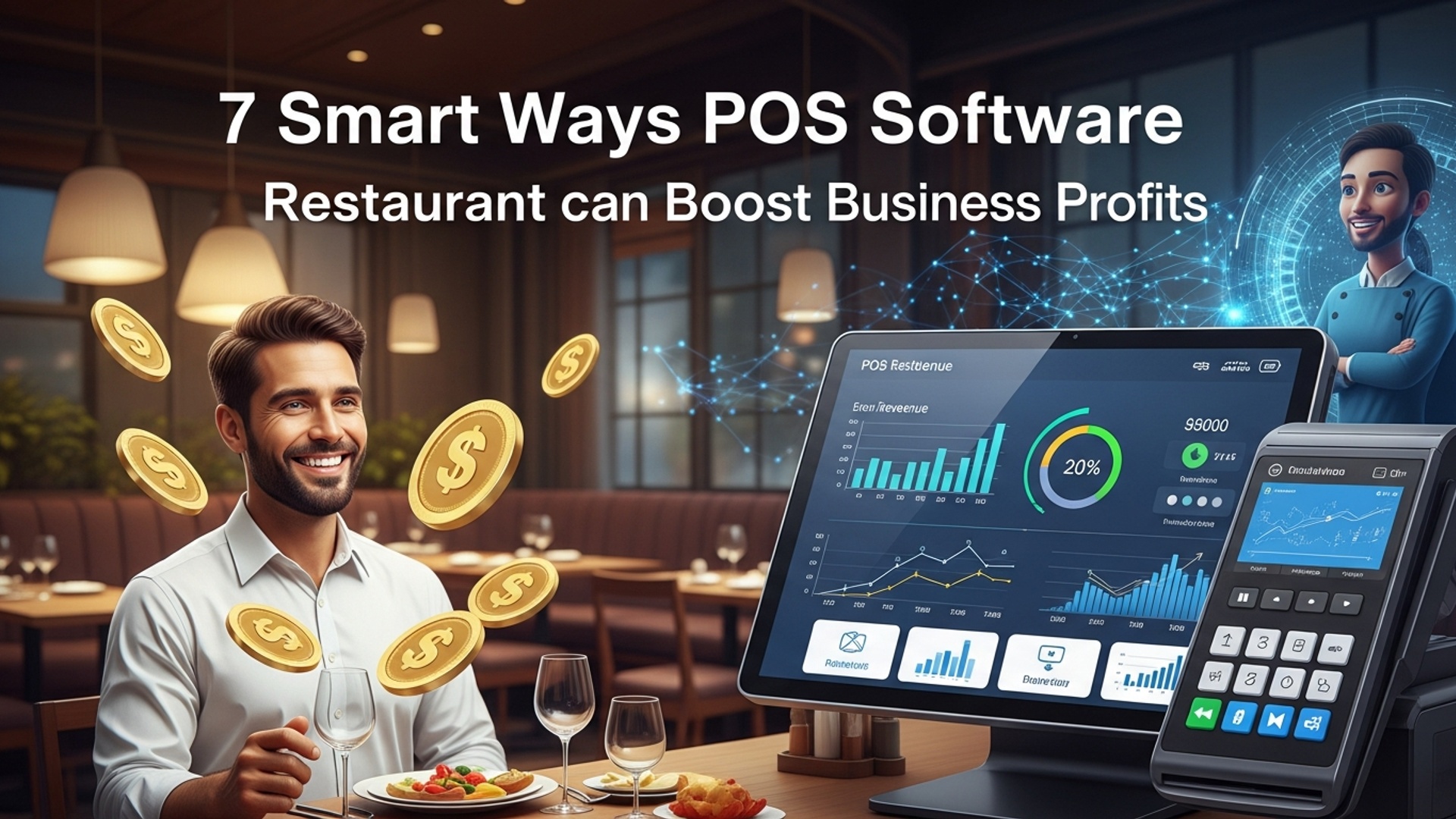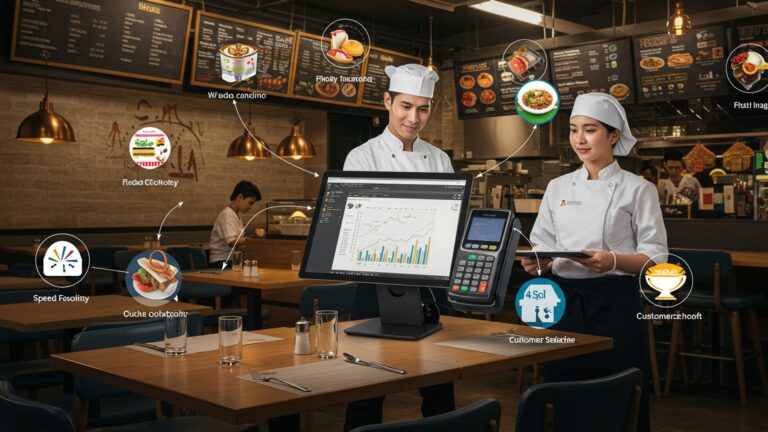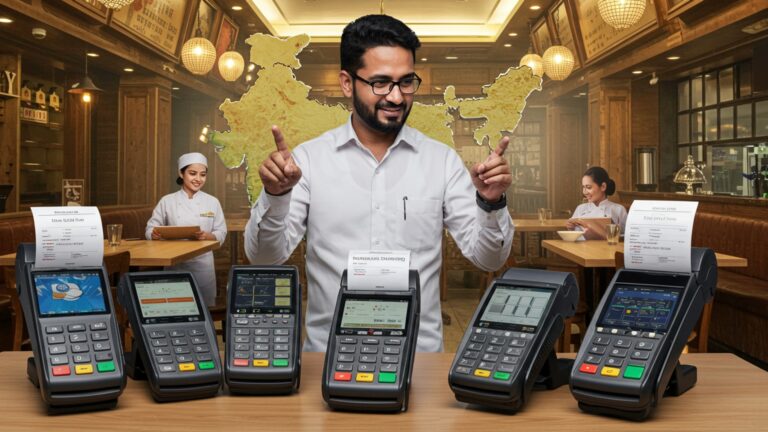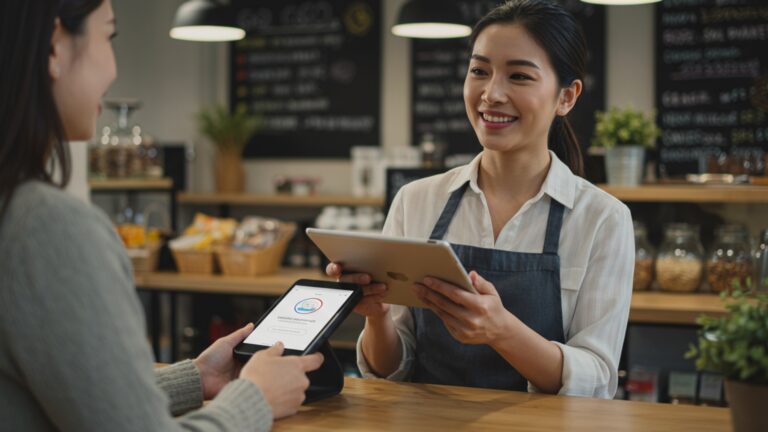7 Smart Ways Restaurant POS Software Can Boost Your Business Profits
In today’s fiercely competitive hospitality sector, simply taking orders and processing payments no longer suffices; restaurants demand a strategic advantage. Modern Restaurant POS software has evolved far beyond a mere cash register, becoming an indispensable operational nerve center. It now integrates AI-driven inventory forecasting to minimize waste, facilitates seamless contactless ordering via QR codes. provides real-time analytics for optimizing staff deployment and menu performance. This sophisticated ecosystem empowers restaurateurs to identify new profit centers, enhance customer experiences with personalized promotions. streamline every facet of their operation, ultimately driving significant increases in business profits by transforming data into actionable financial gains.

1. Streamlined Order Management and Enhanced Accuracy
At its core, a robust Restaurant POS software system revolutionizes the way orders are taken, processed. fulfilled. Imagine a bustling Friday night service; without a modern POS, servers might scribble orders on notepads, leading to potential misinterpretations, lost tickets, or incorrect entries. This not only frustrates customers but also creates costly food waste and delays.
A sophisticated Restaurant POS software system digitizes this entire process. Servers can take orders directly on handheld devices or stationary terminals, with modifiers and special requests clearly noted. These orders are then instantly transmitted to the kitchen display system (KDS) or kitchen printers, minimizing human error and accelerating service speed. This direct communication channel ensures that every dish is prepared exactly as requested, boosting customer satisfaction and reducing the chances of remakes.
- Reduced Errors
- Faster Service
- Improved Customer Experience
- Less Food Waste
Eliminates miscommunication between front-of-house and back-of-house staff.
Orders reach the kitchen instantly, cutting down wait times.
Accurate orders lead to happier diners and repeat business.
Fewer incorrect orders mean less food thrown away, directly impacting your bottom line.
For example, a restaurant manager once shared how their switch to a tablet-based Restaurant POS software drastically cut down order errors from an average of 5-7 per shift to less than one, directly saving them hundreds of dollars weekly in wasted ingredients and labor for remakes.
2. Optimized Inventory Control and Waste Reduction
One of the most significant profit drains for any restaurant is inefficient inventory management. Overstocking leads to spoilage and tied-up capital, while understocking can result in missed sales opportunities and customer dissatisfaction. This is where advanced Restaurant POS software truly shines.
Modern POS systems offer sophisticated inventory management modules that track ingredients in real-time. Every sale automatically deducts items from your stock, providing an accurate, up-to-the-minute overview of your inventory levels. This allows restaurateurs to:
- Monitor Usage
- Automate Reordering
- Identify Waste
- Optimize Menu Costing
interpret which ingredients are used most frequently and in what quantities.
Set up alerts for low stock levels and even automate purchase orders to suppliers, preventing stockouts and ensuring you always have what you need.
Pinpoint discrepancies between theoretical and actual stock levels, helping identify theft, spoilage, or portion control issues.
Accurately calculate the cost of each dish, allowing for smarter pricing strategies and better profit margins.
Consider a popular Italian restaurant that struggled with inconsistent pasta and sauce inventory. By implementing a Restaurant POS software with robust inventory features, they could track every portion sold, identify peak usage times. even integrate with their suppliers for automated weekly orders. This reduced their food waste by an estimated 15% and ensured they never ran out of their signature dishes, leading to consistent sales.
3. Empowering Customer Relationship Management (CRM)
Building a loyal customer base is paramount for long-term profitability. modern Restaurant POS software extends far beyond transaction processing to facilitate robust customer relationship management (CRM). While not always a dedicated CRM suite, many POS systems integrate features that help you comprehend and engage with your diners more effectively.
By capturing customer data—such as order history, preferences. visit frequency (often linked to loyalty programs or online ordering accounts)—your POS becomes a powerful tool for personalized marketing and enhanced service. This allows you to:
- Implement Loyalty Programs
- Personalize Marketing
- Improve Service
- Gather Feedback
Reward frequent customers with points, discounts, or exclusive offers, encouraging repeat visits.
Send targeted promotions based on past purchases (e. g. , “We noticed you love our special pasta; it’s 10% off this week!”).
Servers can access customer notes or preferences, allowing for a more personalized and memorable dining experience (e. g. , “Welcome back, we have your usual coffee ready!”).
Integrate with feedback tools to interpret customer satisfaction and address concerns proactively.
A local bakery, for instance, used their Restaurant POS software to track customer purchases and offer a “buy 9, get 1 free” loyalty program for coffee. They also used the data to send personalized birthday offers. This simple strategy led to a 20% increase in repeat customer visits and significantly boosted their overall sales.
4. Unlocking Data-Driven Business Insights
The true power of modern Restaurant POS software lies in its ability to transform raw transaction data into actionable intelligence. Gone are the days of guessing which menu items are most profitable or when your peak hours truly are. A comprehensive POS system generates a wealth of reports that provide deep insights into every facet of your business operations.
These reports can cover a wide array of metrics, including:
- Sales Performance
- Peak Hours & Days
- Menu Item Profitability
- Employee Performance
- Cost of Goods Sold (COGS)
Daily, weekly, monthly. yearly sales breakdowns by item, category, or server.
Identify your busiest times to optimize staffing and inventory.
comprehend which dishes are your biggest money-makers and which might need adjustment or removal.
Track individual sales, average check size. service speed.
Integrate with inventory data to get a clearer picture of your actual food costs.
By regularly analyzing these reports, a restaurant owner can make informed, strategic decisions. For example, if reports show that a particular dessert item has high sales but consistently low-profit margins, they might adjust its pricing or ingredients. Conversely, if a dish with high-profit margins isn’t selling well, marketing efforts can be focused on promoting it. This analytical capability provided by Restaurant POS software is indispensable for optimizing operations and maximizing profitability.
As a seasoned industry consultant often advises, “Your POS isn’t just a cash register; it’s your business’s central nervous system. The data it provides is the lifeblood for smart growth decisions.”
5. Boosting Staff Efficiency and Operational Flow
Efficient staff are key to a smooth-running and profitable restaurant. Restaurant POS software plays a pivotal role in enhancing employee productivity and streamlining front-of-house and back-of-house operations, ultimately contributing to lower labor costs and improved service quality.
Here’s how a POS system empowers your team:
- Faster Order Entry
- Integrated Time Tracking
- Simplified Table Management
- Split Bills with Ease
- Reduced Manual Tasks
Intuitive interfaces and customizable menus allow servers to take orders quickly and accurately, reducing training time for new hires.
Many POS systems include time clock functionalities, simplifying payroll processing and providing accurate data for labor cost analysis.
Visual floor plans enable hosts and servers to manage tables effectively, track dining progress. optimize seating arrangements.
Complex requests like splitting checks among multiple diners become simple, reducing server stress and improving customer satisfaction.
Automation of tasks like inventory updates, sales reporting. payment processing frees up staff to focus on customer service.
Consider a scenario where a new server at a busy bistro is able to quickly learn the menu and take complex orders using a graphical interface on the POS. This reduces the need for extensive, costly training and allows them to become productive much faster. The seamless flow of insights from the server to the kitchen, managed by the Restaurant POS software, also prevents bottlenecks and keeps service running smoothly, even during peak hours.
6. Facilitating Faster and Diverse Payment Processing
In today’s digital age, customers expect flexibility and speed when it comes to payments. A modern Restaurant POS software system is equipped to handle a wide array of payment methods, ensuring convenience for customers and efficient transaction processing for your business.
Key advantages include:
- Multiple Payment Options
- Faster Transactions
- Enhanced Security
- Simplified Accounting
- Table-Side Payments
Support for credit/debit cards (EMV chip cards), contactless payments (NFC like Apple Pay, Google Pay), mobile wallets. even online payment integrations.
High-speed processing reduces checkout times, leading to quicker table turnover and shorter lines.
PCI-compliant POS systems encrypt transaction data, protecting both your business and your customers from fraud.
All transactions are automatically recorded and categorized, simplifying end-of-day reconciliation and reducing accounting errors.
Portable POS devices allow staff to process payments directly at the table, enhancing convenience and security by keeping cards in sight.
A casual dining restaurant found that by implementing a Restaurant POS software that supported table-side payments and contactless options, their average transaction time decreased by 30 seconds per table. Over hundreds of tables a day, this accumulated into significant time savings and allowed them to seat more customers, directly boosting their daily revenue.
7. Strategic Cost Reduction and Profit Maximization
Ultimately, the integration of advanced Restaurant POS software is a strategic move towards significant cost reduction and overall profit maximization. While the initial investment might seem substantial, the long-term benefits often far outweigh the costs, creating a healthier, more sustainable business model.
The cumulative effects of the previously discussed points — reduced errors, optimized inventory, improved staff efficiency. data-driven decisions — all converge to directly impact your bottom line. Less food waste means lower ingredient costs. More accurate orders mean fewer remakes. Faster service means more table turns and higher revenue. Better insights mean smarter menu engineering and marketing spend.
Consider the stark contrast between operating with and without a modern Restaurant POS software:
| Operational Aspect | Traditional/Manual System | Modern Restaurant POS Software |
|---|---|---|
| Order Accuracy | Prone to human error, miscommunication. | Digitally precise, direct to kitchen. |
| Inventory Management | Manual counts, guesswork, high waste. | Real-time tracking, automated reorder alerts, reduced spoilage. |
| Labor Efficiency | Time-consuming manual tasks, complex payroll. | Streamlined order entry, integrated time clock, faster service. |
| Data Analytics | Limited insights, anecdotal decisions. | Comprehensive reports, data-driven strategy. |
| Payment Processing | Slower, fewer options, higher fraud risk. | Fast, secure, diverse payment methods. |
| Customer Loyalty | Basic or non-existent programs. | Integrated CRM, personalized promotions. |
| Overall Profitability | Struggles with hidden costs, inefficiencies. | Optimized operations, reduced waste, increased sales potential. |
By minimizing losses from waste and errors, optimizing resource allocation. providing the tools to increase sales and customer loyalty, a well-implemented Restaurant POS software system transforms operational challenges into opportunities for growth and sustained profitability. It’s an investment that pays dividends by making your business smarter, leaner. more responsive to market demands.
Conclusion
It’s clear that modern restaurant POS software transcends its traditional role, evolving into a multifaceted profit-boosting engine. Having explored the seven smart strategies, from optimizing inventory to enhancing customer loyalty, the key takeaway is proactive engagement with your system’s full capabilities. My personal tip? Don’t just process transactions; actively mine your POS data. For instance, leveraging advanced analytics to pinpoint peak hours for staffing or identifying best-selling menu items, a recent trend, can immediately impact your bottom line. I’ve witnessed firsthand how a small cafe utilized their POS’s integrated CRM to personalize offers, turning casual diners into devoted regulars, significantly increasing their repeat business. Embrace this technological evolution. Take the actionable step today to review your current POS setup and identify untapped features that can streamline operations and drive revenue. The future of your restaurant’s profitability isn’t just about good food; it’s about smart management powered by intelligent tools. To delve deeper into how these systems can transform your business, explore the essential benefits of modern restaurant POS software solutions.
More Articles
How to Choose the Best Restaurant POS System for Your Business Needs
7 Must-Have Features Your Restaurant POS Software Needs to Thrive
Master 5 Smart Strategies to Boost Restaurant Efficiency Using Your POS
Guide to Seamless Restaurant POS Integration 6 Steps for Business Success
5 Common Restaurant POS Problems and Easy Solutions to Fix Them
FAQs
How does restaurant POS software speed up order taking and serving?
It digitizes the entire ordering process, sending orders directly from the table to the kitchen display system. This cuts down on manual errors, reduces wait times for customers. ensures food gets to tables faster, meaning happier diners and more table turns throughout the day.
Can POS really help me save money on ingredients and reduce waste?
Absolutely! With real-time inventory tracking, a good POS system alerts you when stock is low, helps you monitor ingredient usage. identifies popular or unpopular dishes. This prevents over-ordering, minimizes spoilage. helps you optimize your menu for profitability by reducing food waste.
What about keeping customers coming back? How does POS help build loyalty?
Many POS systems have built-in customer relationship management (CRM) features that let you manage loyalty programs, track customer preferences. collect valuable contact data. You can then use this data to send targeted promotions or special offers, encouraging repeat visits and building a strong, loyal customer base.
How can I use POS data to make better business choices?
POS software provides detailed reports and analytics on everything from sales trends and peak hours to popular menu items and staff performance. These insights empower you to make data-driven decisions about staffing levels, menu adjustments, marketing efforts. operational efficiencies, ultimately boosting your bottom line.
Does POS make managing tables and reservations easier in a busy restaurant?
Definitely. A modern POS system allows you to visualize your dining room layout, track table status in real-time. manage reservations seamlessly. This helps you seat guests more efficiently, optimize table turnover. reduce customer wait times, leading to a smoother operation and increased revenue potential.
Can POS software help me manage my staff better and save administrative time?
Yes, it streamlines employee management by tracking clock-ins/outs, managing shifts. even calculating tips. Some systems can integrate with payroll, significantly reducing manual administrative tasks and ensuring accurate compensation, which frees up your time to focus on other aspects of your business.
I’m looking to expand into online orders and delivery. How does POS fit in?
Many contemporary POS systems integrate smoothly with various online ordering platforms and third-party delivery services. This means you can manage all your in-house, takeout. delivery orders from a single system, simplifying operations, reaching a wider audience. opening up new revenue streams without added complexity.





